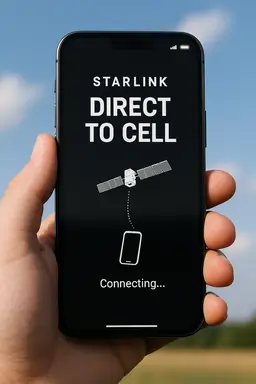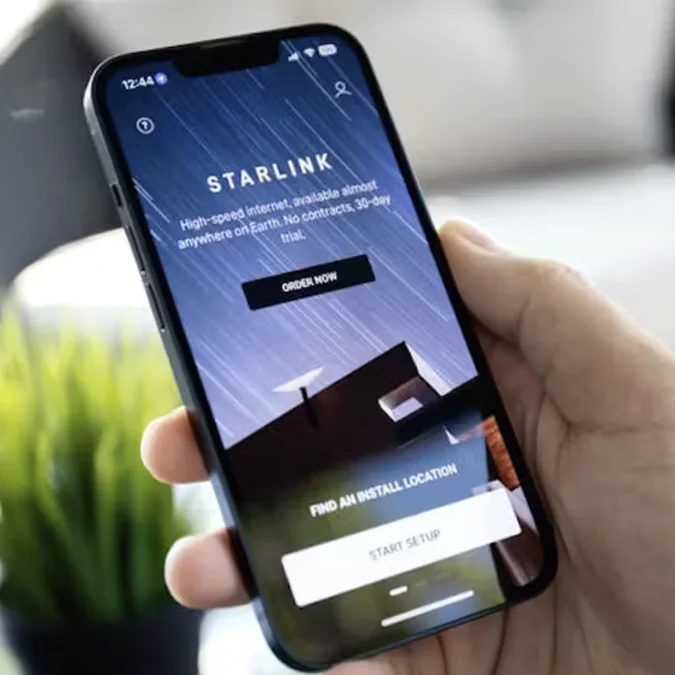Satellite communication technology is evolving rapidly, and Starlink, a SpaceX initiative, is leading the charge with its Direct to Cell solution. This innovation allows standard smartphones to connect directly to satellites in orbit, eliminating the need for traditional cell towers. For telecom technicians and tech enthusiasts, understanding the launches, impacts, and benefits of this technology is crucial to staying ahead in the future of global connectivity.

What is Starlink’s Direct to Cell Technology?
Starlink Direct to Cell uses satellites in Low Earth Orbit (LEO, about 550 km altitude) equipped with advanced eNodeB modems, functioning as “cell towers in space.” These satellites connect to standard LTE smartphones without requiring additional hardware, special apps, or device modifications. The communication is powered by phased array antennas and software algorithms that manage challenges like Doppler shift and the high speed of satellites (tens of thousands of km/h).
The technology operates through a laser backhaul, which transmits data between satellites at rates up to 100 times faster than radio frequency communications, ensuring low latency and high bandwidth. This infrastructure enables Starlink to provide connectivity in areas where terrestrial networks are nonexistent or damaged.
Starlink Direct to Cell Challenges?
- Direct Connection: LTE smartphones connect to satellites via radio signals, without needing external antennas.
- Integration with Terrestrial Networks: Satellites act as roaming partners, integrating with carriers like T-Mobile (USA) and KDDI (Japan).
- Low Latency: LEO orbit reduces latency to around 25 ms, compared to 600+ ms for geostationary satellites.
Recent Launches and Future Predictions
SpaceX has been ramping up launches of Starlink satellites with Direct to Cell capabilities, using Falcon 9 rockets and planning a transition to Starship, which will enable the deployment of larger, more advanced satellites (V3). Here’s the current landscape:
Starlink Direct to Cell Completed Launches
- January 2024: Six Direct to Cell satellites were launched for initial testing in the US, in partnership with T-Mobile. SpaceX confirmed successful 4G text message transmission just six days after the launch.
- December 2024: Twenty satellites were launched, completing the first orbital layer of the Direct to Cell constellation. These satellites, deployed by a Falcon 9 from Vandenberg Space Force Base in California, enabled text services in 2024.
- April 2025: Two recent launches on April 27 and 28 added 51 satellites to the constellation, 13 of which have Direct to Cell capabilities. These launches marked Starlink’s 250th dedicated mission.
Launch Predictions
- 2025: SpaceX plans to expand the constellation with hundreds of Direct to Cell satellites, enabling voice and data services starting in the second half of the year. The company aims to launch V3 satellites with Starship, offering downlink capacities of 1 Tbps and uplink of 160 Gbps—a 10x and 24x increase, respectively, compared to V2 Mini.
- Long Term: Elon Musk envisions a constellation of up to 42,000 satellites, with around 12,000 planned by 2027. The introduction of Starship will allow for more frequent launches with greater capacity, reducing costs and accelerating expansion.

Benefits of Direct to Cell Technology
Starlink Direct to Cell promises to transform mobile connectivity, especially in scenarios where terrestrial networks fail. Here are the key benefits:
1. Connectivity in Remote Areas
- Eliminates signal dead zones, enabling communication in rural, mountainous, or oceanic regions.
- Ideal for sectors like maritime, aviation, and IoT, connecting devices in areas without terrestrial infrastructure.
2. Resilience in Crises
- During conflicts or natural disasters, such as Hurricane Helene (2024), Starlink provided emergency connectivity where cell towers were destroyed.
- Satellite connectivity is less susceptible to disruptions from physical infrastructure damage.
3. Integration with Existing Networks
- Compatible with standard LTE devices (CAT-1, CAT-1 Bis, CAT-4), ensuring immediate accessibility.
- Partnerships with global carriers like Optus (Australia) and Rogers (Canada) enable global roaming at no additional cost to users.
4. IoT Support
- The technology will enable millions of IoT devices, such as agricultural sensors and industrial equipment, in areas without terrestrial coverage, boosting critical sectors.
5. Low Latency and High Speed
- A latency of 25 ms supports real-time applications like video calls and online gaming, something unfeasible with geostationary satellites.
Want to explore how Starlink can optimize your telecom operations? Check out partnership plans on Starlink’s official website and see how to integrate this technology into your network!
Impacts on the Telecommunications Industry
The introduction of Direct to Cell will have significant impacts on the telecom sector, bringing both opportunities and challenges for technicians and companies:
Positive Impacts
- Market Expansion: Carriers can offer services in previously unreachable areas, growing their customer base.
- Technological Innovation: The need to integrate terrestrial and satellite networks will drive the development of new software and hardware solutions.
- Bridging the Digital Divide: Connectivity in rural and emerging regions, such as Africa and Latin America, will promote digital inclusion and economic opportunities.
Starlink Direct to Cell Challenges
- Competition with Terrestrial Networks: The technology could disrupt traditional carriers’ business models, especially in saturated markets.
- Regulation: Starlink faces regulatory hurdles, such as opposition from carriers (AT&T, Verizon) to easing radio emission limits in the US.
- Orbital Sustainability: With plans for up to 42,000 satellites, there are concerns about space debris and interference with astronomical observations.
Telecom technicians, get ready! Integrating satellite networks will require new skills. Consider courses on LEO networks and backhaul technologies to stand out in the market.
The Future of Mobile Communication with Starlink
Starlink Direct to Cell is redefining what it means to be connected. With frequent launches, global partnerships, and technology that eliminates geographical barriers, SpaceX is paving the way for a world where connectivity is truly universal. For technicians and enthusiasts, now is the time to dive into this revolution, whether by learning about the technologies involved or exploring partnership opportunities with Starlink.
Stay in the loop! Follow SpaceX’s upcoming launches and discover how Direct to Cell can transform your operations.
Visit emnews.online for more details and start planning the future of your network today!